Do you often daydream about flying off into the deep blue yonder, but don’t think you have the funds to make your aviation dreams come true?
Sure, you could get airborne by taking a helicopter tour or hot air balloon ride for a few hundred dollars, but it’s not the same as piloting your own aircraft.
Well, it might just be cheaper to take that solo flight than you think. Whether you’re most interested in ultralight aviation, unpowered gliding, or flying an actual airplane, you can read on to learn some of the best ways to fly high without letting your bank balance drop too low.
Gliding
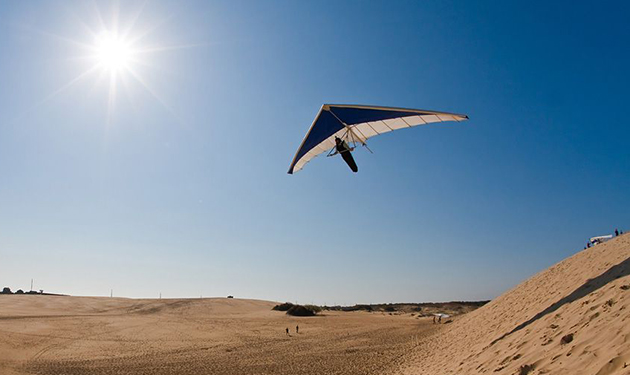
Hang gliding, paragliding and powered gliding are all relatively inexpensive ways to experience the freedom of personal flight. Let’s break down the features and costs associated with each.
So what are the differences between these three types of gliding? A hang glider is a non-motorized aircraft whose structure consists of a triangular-shaped aluminum alloy frame with a wing made of parachute fabric. The aircraft must be foot-launched from a hill or tow system. Still, you can sail for hours on a hang glider. A paraglider more closely resembles a parachute, as it has no rigid structure. These ultra-portable flyers (one can fit into a backpack) are also non-motorized, requiring a foot or tow launch. Powered paragliding is a type of ultralight aviation in which the pilot is propelled by a motor on his back, without requiring any foot-launch. There are also powered hang gliders, though the propeller is not very strong and these are mostly popular only among experienced hang glider pilots.
Depending on environmental conditions, altitude, and technique, most gliding experiences, powered or otherwise, will allow you to soar at speeds ranging from about 20 MPH up to 50 MPH at a typical launch altitude of 2,000 to 2,500 feet. However, some experienced “speed gliders” can “dive” their hang glider at speeds as high as 80 MPH.
When it comes to cost calculation, the first thing you should know is that in the United States, you do not need a pilot license to operate any of these gliders. Training, however, is highly recommended for obvious safety reasons, and licenses may be required to glide solo in certain areas. Depending on how much training you want to get, it may consist of a few hours to a few days’ worth of instruction and may cost anywhere from a few hundred to a couple thousand dollars. However, you should be able to get sufficient training on each technique without paying more than about $1,200.
If you want to go on to purchase your own glider after taking lessons, you will typically pay the following for each:
Hang glider: $2,500 to $5,000 new; $1,000 or less used
Paraglider: $5,000 new; $2,500 used
Powered paraglider (complete package including wing, harnesses, and motor): $6,000 to $9,500
As you can see, you can become a regular recreational hang glider for under $2,500, a paraglider for under $5,000, and a powered paraglider for under $10,000 – or pay a fraction of these prices if you just want to try it and don’t end up purchasing your own glider.
Powered Parachute
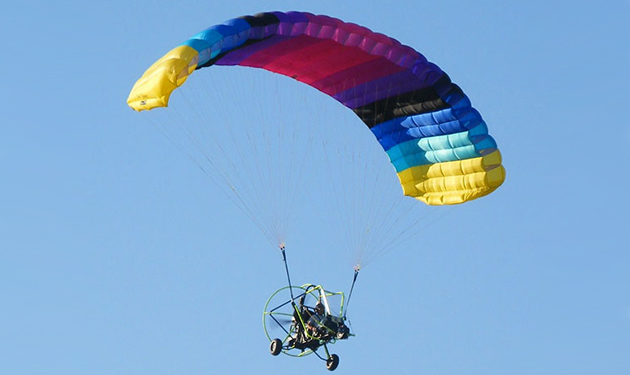
A powered parachute (PPC) is a motorized parachute with wheels that can travel between 25 and 35 MPH at altitudes between 500 and 1,500 feet. With a relatively slow, low-altitude ride, powered parachutes are great for sightseeing and photography. No airport is required to take off or land – if you live out in the country, you could theoretically fly from your backyard! The engine size allows about three hours of flying time. As with powered gliders, most of these stable, simple aircrafts fall into the “ultralight” aviation category, which means that no license is required to fly one – however, this only applies to one-seaters. If you want to fly a two-seater PPC, which is considered a light sport aircraft, you will need to get a sport pilot license.
The total cost to own a single-seat PPC, including the paramotor and the parachute, ranges from about $7,000 to $9,000 (or as little as half those prices if purchased used), so including the cost of instruction, you could easily become a PPC pilot and owner for less than $10,000.
Ultralight Trike
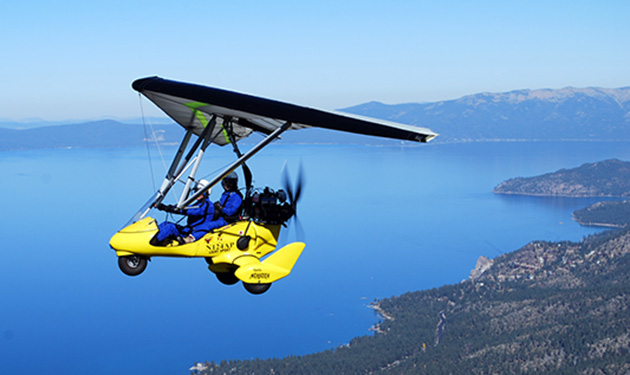
Maybe you want something a little closer to a real airplane experience. While it might look more like a cross between a hang glider and an airplane, an ultralight trike is a special type of low-cost aircraft that you could fly across the ocean, and into your backyard landing strip. Trikes consist of a flexible, high-performance Rogallo wing, a cockpit, a propeller, and three-wheeled landing gear. The pilot sits comfortably in an open cockpit, steering the aircraft using weight-shift flight control. Some have described the ultralight trike as a “flying motorcycle.” The average speed for an ultralight trike is 75 MPH and it can fly as high as 10,000 feet. And as long as the trike falls into the ultralight, single-seater category, no license is required to fly one. Private training costs are comparable to that for other types of ultralight aviation (typically less than $2,000).
You can purchase a new ultralight trike for as little as $5,000 and trike enthusiasts claim you can build one yourself for as cheap as $2,000!
Hot air balloon
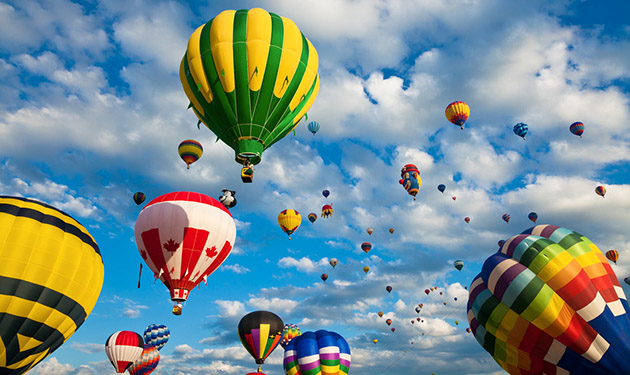
While it’s not for everyone and is one of the more expensive of these options, for some people, hot air ballooning is the ultimate airborne experience. Hot air balloons are the oldest flight technology and with average speeds of 15 MPH, they make for a relaxed, even therapeutic flights. Pilots typically use them to sail over scenic areas, such as forests and fields, and even across deserts and mountains. Carried by heated air, hot air balloons can fly at very high altitudes, though oxygen is needed for flights exceeding 15,000 feet and most flights do not exceed 3,000 feet. A typical flight is one to two hours, but it is possible to take days-long trips on a hot air balloon.
Pilots navigate using wind currents, and while you can plan flights to some extent, the landing destination may not be exact – balloon aviation is for the type of person who prefers to travel “wherever the wind takes you.”
Like the other aircrafts discussed here, hot air balloons do not require a license to operate if their weight puts them in the ultralight aircraft category. However, some hot air balloons belong to the “lighter-than-air” or “lightweight” categories, which require licensing, as do balloons that carry more than one person. Hot air balloons must also be annually FAA-inspected as to their airworthiness.
While new hot air balloons can range from $20,000 upwards, you can find a smaller used balloon for as little as $5,000. Keep in mind that maintenance, regulatory, insurance, and fuel expenses will cost between hundreds and thousands of dollars per year as well – fuel costs, of course, depend on flight length and frequency (most sport pilots fly only between 35 and 75 hours a year). You’ll also need a “chaser” crew to help inflate and deflate the balloon and assist with take offs and landings. Theoretically, though, you could become a recreational hot air balloon pilot and owner for an initial cost of well under $10,000.
Single-engine plane
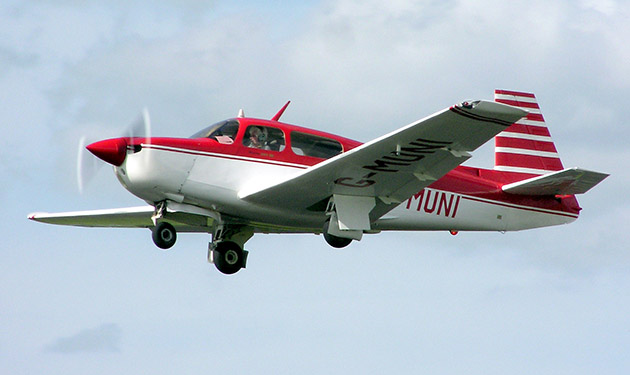
For some aspiring pilots, nothing but a real airplane will do. And while you might assume that all planes carry price tags of six-figures and upward (as most, indeed, do), it is possible to get a simple, single-engine plane for far less than that. Basic recreational airplanes like the Cessna 150, the Piper Colt, and the Cessna 120/140 can be purchased for around $15,000, and other respectable models, like the Taylorcraft BC-12, and the Ercoupe 415 might be available for as little as $12,000. On eBay, you can even find some all-metal ultralight planes listed at under $10,000. Of course, you should be very informed about what type of plane you are buying and shouldn’t just buy the cheapest plane you can find. You want the make sure that the plane has good maintenance records — most of the above-mentioned planes are 1940s and ’50s-era models — as well as good safety specs, and no damage history (and also consider the costs for upkeep, insurance, fuel, etc.).
You’ll also need a pilot’s license to fly lightweight planes, though a sport pilot license to fly lightweight planes should not cost much more than $3,500.
All in all, if you are dedicated to becoming an airplane pilot and owner, you can do so for under $20,000 – and you can become a certified pilot for less than $5,000 if you (quite understandably) don’t have enough spare cash right now to spring for your own plane just yet. But hey, we all need a lofty goal to strive for!
